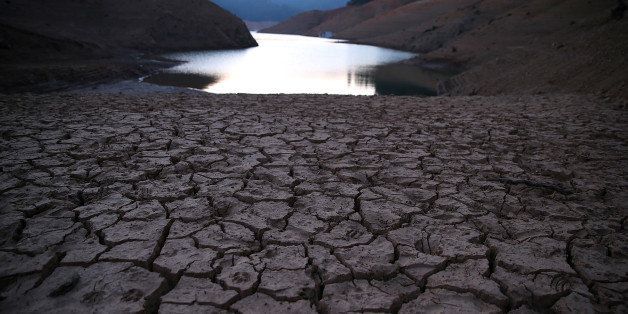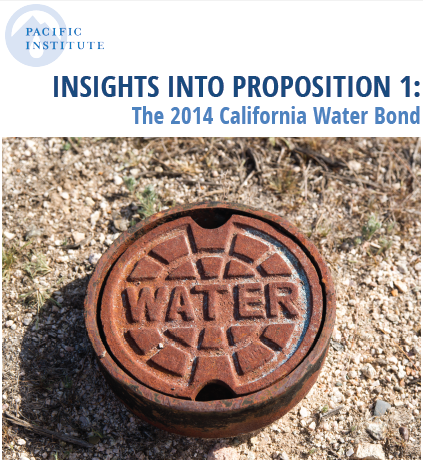
On November 4, California voters will decide the fate of Proposition 1 -- the 2014 Water Bond -- which authorizes the sale of $7.12 billion in new general obligation bonds and the reallocation of an additional $425 million of previously authorized, but unissued, bonds.
Do you live in California and are you trying to figure out how to vote on Proposition 1? Today the Pacific Institute has released a comprehensive assessment of Prop 1. The Institute is neutral: We are taking no formal position, choosing instead to try to offer the voting public some insights into the complexities of the bond. If passed by the voters, Proposition 1 would be the fourth-largest water bond in California history, funding a wide range of water-related actions and infrastructure. The total cost of Proposition 1, including interest, will exceed $14 billion over 30 years.
In the Pacific Institute's full analysis (available for free, here), we focus on the following key questions:
- How does Proposition 1 compare to past water bonds?
- Are general revenue bonds the best way to pay for water investments?
- How would the bond funds be allocated?
- How might the funds for water storage be allocated among competing projects?
- How does the bond address the needs of disadvantaged communities?
- How does the bond address ecosystem needs?
Key findings by the Pacific Institute regarding Proposition 1 include:
- Proposition 1 will not provide any immediate drought relief.
- While Proposition 1 contains funds that could provide important benefits for California's environment and communities, there is also a risk that major provisions could cost taxpayers a substantial amount of money without producing any real improvements to water supply, reliability, or environmental quality.
- Thirty-six percent ($2.7 billion) of total Proposition 1 funds are allocated to the "public benefits" of possible surface or groundwater storage projects. While some reports suggest that the storage funds will go to controversial surface dams and reservoirs, this is by no means certain.
- Nine percent of the funds are devoted to helping alleviate water challenges in "disadvantaged communities." A majority of these funds would support much-needed drinking and wastewater system improvements; however, funding to support ongoing operation and maintenance costs and technical assistance is limited, raising questions about the long-term sustainability of these projects.
- Only one percent of funds are devoted to water conservation and efficiency, despite extensive evidence and broad agreement that such projects could produce more benefit at lower cost compared to other water supply options.
- Other major provisions would provide funds for some ecosystem protection and restoration and to improve surface and groundwater quality.
- None of the funds can be used directly for building the controversial Delta conveyance infrastructure (the Delta tunnels) that is also being debated statewide.
Ultimately, if Proposition 1 passes, its true effectiveness in addressing California's overall water problems will depend on how the money is actually allocated and spent by the state and local agencies that receive the funds. The Pacific Institute strongly recommends that these agencies, especially the California Water Commission, develop rigorous, independent, and transparent process to evaluate and quantify the public benefits of proposed storage projects and other investments.
We also recommend that decisions about the rest of the funds be made with a focus on meeting public and ecosystem needs for safe and reliable water, improvements in efficient use, and reducing the risks of future droughts and floods. But voters should not expect immediate relief from Proposition 1 for the impacts of the current drought; nor should they expect these funds to be the last investment that is needed for better institutions, smarter planning, and more effective water management strategies. It can be, at best, a down payment on our water future.

